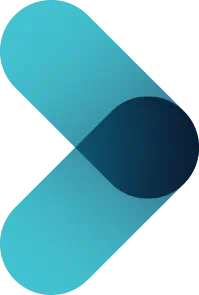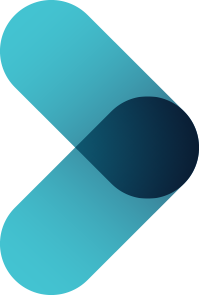GIVE NOW before 2025 ends—your gift will be doubled to help children in need. Click here to 2x your impact!

Ranked nationally in pediatric care.
Arkansas Children's provides right-sized care for your child. U.S. News & World Report has ranked Arkansas Children's in seven specialties for 2025-2026.

It's easier than ever to sign up for MyChart.
Sign up online to quickly and easily manage your child's medical information and connect with us whenever you need.

We're focused on improving child health through exceptional patient care, groundbreaking research, continuing education, and outreach and prevention.

When it comes to your child, every emergency is a big deal.
Our ERs are staffed 24/7 with doctors, nurses and staff who know kids best – all trained to deliver right-sized care for your child in a safe environment.

Arkansas Children's provides right-sized care for your child. U.S. News & World Report has ranked Arkansas Children's in seven specialties for 2025-2026.

Looking for resources for your family?
Find health tips, patient stories, and news you can use to champion children.

Support from the comfort of your home.
Our flu resources and education information help parents and families provide effective care at home.

Children are at the center of everything we do.
We are dedicated to caring for children, allowing us to uniquely shape the landscape of pediatric care in Arkansas.

Transforming discovery to care.
Our researchers are driven by their limitless curiosity to discover new and better ways to make these children better today and healthier tomorrow.

We're focused on improving child health through exceptional patient care, groundbreaking research, continuing education, and outreach and prevention.

Then we're looking for you! Work at a place where you can change lives...including your own.

When you give to Arkansas Children's, you help deliver on our promise of a better today and a healthier tomorrow for the children of Arkansas and beyond

Become a volunteer at Arkansas Children's.
The gift of time is one of the most precious gifts you can give. You can make a difference in the life of a sick child.

Join our Grassroots Organization
Support and participate in this advocacy effort on behalf of Arkansas’ youth and our organization.

Learn How We Transform Discovery to Care
Scientific discoveries lead us to new and better ways to care for children.

Learn How We Transform Discovery to Care
Scientific discoveries lead us to new and better ways to care for children.

Learn How We Transform Discovery to Care
Scientific discoveries lead us to new and better ways to care for children.

Learn How We Transform Discovery to Care
Scientific discoveries lead us to new and better ways to care for children.

Learn How We Transform Discovery to Care
Scientific discoveries lead us to new and better ways to care for children.

Learn How We Transform Discovery to Care
Scientific discoveries lead us to new and better ways to care for children.

When you give to Arkansas Children’s, you help deliver on our promise of a better today and a healthier tomorrow for the children of Arkansas and beyond.

Your volunteer efforts are very important to Arkansas Children's. Consider additional ways to help our patients and families.

Join one of our volunteer groups.
There are many ways to get involved to champion children statewide.

Make a positive impact on children through philanthropy.
The generosity of our supporters allows Arkansas Children's to deliver on our promise of making children better today and a healthier tomorrow.

Read and watch heart-warming, inspirational stories from the patients of Arkansas Children’s.

Hello.

Arkansas Children's Hospital
General Information 501-364-1100
Arkansas Children's Northwest
General Information 479-725-6800

What is leukemia?
Leukemia is a blood cancer. Although rare, it is the most common form of cancer in children. Childhood leukemia can occur at any age but is most common in children ages 2 to 6 and affects slightly more boys than girls.
Leukemia starts in the bone marrow, which makes the cells that develop into blood cells. When a child has leukemia, their bone marrow makes a large number of abnormal cells. These abnormal cells are most often white blood cells but they can also be other types of blood cells. The abnormal cells build up and make it difficult for the healthy cells to work correctly.
There are several types of leukemia in children:
- Acute lymphoblastic leukemia (ALL) is by far the most common type of childhood leukemia. It is a type of acute leukemia. This means it develops quickly and needs treatment right away.
- Acute myeloid leukemia (AML) is also a type of acute leukemia that progresses quickly. It is the second most common type of childhood leukemia after ALL.
- Chronic myeloid leukemia (CML) is a type of chronic leukemia. This means it develops slowly. CML is very rare in children.
- Juvenile myelomonocytic leukemia (JMML) is a rare leukemia seen in infants and young children that can have both acute and chronic features. Children with certain genetic disorders (neurofibromatosis type I, Noonan syndrome) have an increased risk for JMML.
What are the signs and symptoms of leukemia?
The common symptoms of childhood leukemia are similar to those of many other conditions, so it’s important to have your child diagnosed by a health professional. Symptoms of childhood leukemia may include:
- Feeling tired or weak
- Fever, with or without infection
- Feeling cold
- Easy bruising or bleeding
- Enlarged liver
- Enlarged spleen
- Loss of appetite (or weight loss)
- Having many infections
- Feeling dizzy
- Shortness of breath
- Bone or joint pain
- Swollen lymph nodes in the neck, stomach, underarm or groin area
What causes leukemia?
There is not a known cause for childhood leukemia. Some research suggests that leukemia may be caused by a combination of genetic and environmental factors, but this research is still ongoing.
How is leukemia treated?
Your child’s treatment for leukemia can depend on what type they have, their age and overall health. These may include:
- Chemotherapy is the most common treatment for leukemia. It is used to kill cancer cells throughout the body. The chemotherapy may be taken by mouth or injected into the bloodstream. It can be used alone or with other treatments.
- Radiation therapy uses high-energy x-rays to kill cancer cells or stop the cancer from growing. It may be used in some cases of leukemia.
- Targeted drug therapy attacks specific cancer cells directly and usually cause less damage to other cells in the body than chemotherapy or radiation. Targeted therapy is often used to treat CML, and sometimes used to treat ALL.
- Immunotherapy is a newer type of treatment that uses your child’s immune system to help fight the cancer. CAR T-cell therapy is an example of immunotherapy.
- Bone marrow transplant (also called a stem cell transplant) is sometimes used to treat leukemia. It uses high doses of chemotherapy to damage the bone marrow. Then healthy stem cells from your child’s own bone marrow, or from a donor, are placed back into the blood.
- Clinical trials test new types of cancer treatments. Ask your child’s doctor if they are eligible for any clinical trials to treat leukemia.
Your care team at Arkansas Children’s is experienced in treating all types of childhood leukemia, and will work with you to create the best treatment plan for your child’s leukemia.

Appointments
New and existing patients can visit our appointment hub for several ways to request an appointment, including online scheduling for many services.
Request an appointmentRelated Services
-
Hospital Services
Bone and Soft-tissue Tumor Program (Orthopedic Oncology)
The Bone and Soft-tissue Tumor Program at Arkansas Children's Hospital provides specialty care for children with bone, muscle, or connective tissue cancer.
-
Hospital Services
Cancer and Blood Disorders Program
Our Cancer and Blood Disorders program provides specialty care for children with blood and bleeding disorders, tumors and many types of cancer.
-
Hospital Services
Brain and Spinal Cord Tumor Clinic
With a focus on the expert care of pediatric patients with brain tumors, spinal tumors or neurofibromatosis (NF), our young patients have access to neuro-oncology specialists for every aspect of care based on their individual needs.
-
Hospital Services
Sickle Cell Disease Program
Learn more about how pediatric sickle cell patients are diagnosed, evaluated and treated at Arkansas Children's.
-
Hospital Services
Infusion Department
The infusion department at Arkansas Children’s Northwest offers a wide range of treatments, including treatment for cancer, gastrointestinal disorders, rheumatology concerns, genetic conditions, and more.
-
Hospital Services
Innovative Therapeutics Program
The Innovative Therapeutics Program is ready and prepared to offer new techniques and clinical trials to treat the most complex cases.
-
Hospital Services
Neuro-Oncology
Arkansas Children’s has the only team of pediatric neuro-oncology specialists in the state dedicated to helping children with brain and spinal cord tumors.
-
Hospital Services
Hematology Inpatient Unit
The hematology inpatient unit at Arkansas Children’s Hospital in Little Rock, specializes in pediatric cancers and blood disorders.
-
Hospital Services
Hemophilia and Bleeding Disorders (Arkansas Center for Bleeding Disorders)
The Arkansas Center for Bleeding Disorders at Arkansas Children’s provides specialty care for children with hemophilia and bleeding disorders.

